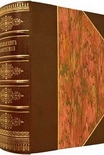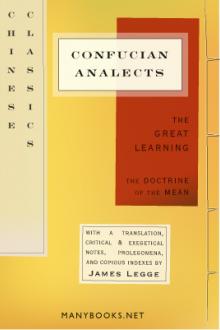Myths and Legends of China by E. Werner (free ebook reader for iphone TXT) 📗

- Author: E. Werner
Book online «Myths and Legends of China by E. Werner (free ebook reader for iphone TXT) 📗». Author E. Werner
The God of Happiness
The God of Happiness, Fu Shên, owes his origin to the predilection of the Emperor Wu Ti (A.D. 502–50) of the Liang dynasty for dwarfs as servants and comedians in his palace. The number levied from the Tao Chou district in Hunan became greater and greater, until it seriously prejudiced the ties of family relations. When Yang Ch’êng, alias Yang Hsi-chi, was Criminal Judge of Page 170Tao Chou he represented to the Emperor that, according to law, the dwarfs were his subjects but not his slaves. Being touched by this remark, the Emperor ordered the levy to be stopped.
Overjoyed at their liberation from this hardship, the people of that district set up images of Yang and offered sacrifices to him. Everywhere he was venerated as the Spirit of Happiness. It was in this simple way that there came into being a god whose portraits and images abound everywhere throughout the country, and who is worshipped almost as universally as the God of Riches himself.
Another person who attained to the dignity of God of Happiness (known as Tsêng-fu Hsiang-kung, ‘the Young Gentleman who Increases Happiness’) was Li Kuei-tsu, the minister of Emperor Wên Ti of the Wei dynasty, the son of the famous Ts’ao Ts’ao, but in modern times the honour seems to have passed to Kuo Tzŭ-i. He was the saviour of the T’ang dynasty from the depredations of the Turfans in the reign of the Emperor Hsüan Tsung. He lived A.D. 697–781, was a native of Hua Chou, in Shensi, and one of the most illustrious of Chinese generals. He is very often represented in pictures clothed in blue official robes, leading his small son Kuo Ai to Court.
The God of Wealth
As with many other Chinese gods, the proto-being of the God of Wealth, Ts’ai Shên, has been ascribed to several persons. The original and best known until later times was Chao Kung-ming. The accounts of him differ also, but the following is the most popular.
The Gods of Happiness, Office, and Longevity
When Chiang Tzŭ-ya was fighting for Wu Wang of the Chou dynasty against the last of the Shang emperors, Page 171Chao Kung-ming, then a hermit on Mount Ô-mei, took the part of the latter. He performed many wonderful feats. He could ride a black tiger and hurl pearls which burst like bombshells. But he was eventually overcome by the form of witchcraft known in Wales as Ciurp Creadh. Chiang Tzŭ-ya made a straw image of him, wrote his name on it, burned incense and worshipped before it for twenty days, and on the twenty-first shot arrows made of peach-wood into its eyes and heart. At that same moment Kung-ming, then in the enemy’s camp, felt ill and fainted, and uttering a cry gave up the ghost.
Later on Chiang Tzŭ-ya persuaded Yüan-shih T’ien-tsun to release from the Otherworld the spirits of the heroes who had died in battle, and when Chao Kung-ming was led into his presence he praised his bravery, deplored the circumstances of his death, and canonized him as President of the Ministry of Riches and Prosperity.
The God of Riches is universally worshipped in China; images and portraits of him are to be seen everywhere. Talismans, trees of which the branches are strings of cash, and the fruits ingots of gold, to be obtained merely by shaking them down, a magic inexhaustible casket full of gold and silver—these and other spiritual sources of wealth are associated with this much-adored deity. He himself is represented in the guise of a visitor accompanied by a crowd of attendants laden with all the treasures that the hearts of men, women, and children could desire.
The God of Longevity
The God of Longevity, Shou Hsing, was first a stellar deity, later on represented in human form. It was a constellation formed of the two star-groups Chio and K’ang, the first two on the list of twenty-eight Page 172constellations. Hence, say the Chinese writers, because of this precedence, it was called the Star of Longevity. When it appears the nation enjoys peace, when it disappears there will be war. Ch’in Shih Huang-ti, the First Emperor, was the first to offer sacrifices to this star, the Old Man of the South Pole, at Shê Po, in 246 B.C. Since then the worship has been continued pretty regularly until modern times.
But desire for something more concrete, or at least more personal, than a star led to the god’s being represented as an old man. Connected with this is a long legend which turns on the point that after the father of Chao Yen had been told by the celebrated physiognomist Kuan Lo that his son would not live beyond the age of nineteen, the transposition from shih-chiu, nineteen, to chiu-shih, ninety, was made by one of two gamblers, who turned out to be the Spirit of the North Pole, who fixes the time of decease, as the Spirit of the South Pole does that of birth.
The deity is a domestic god, of happy mien, with a very high forehead, usually spoken of as Shou Hsing Lao T’ou Tzŭ, ‘Longevity Star Old-pate,’ and is represented as riding a stag, with a flying bat above his head. He holds in his hand a large peach, and attached to his long staff are a gourd and a scroll. The stag and the bat both indicate fu, happiness. The peach, gourd, and scroll are symbols of longevity.
The Door-gods
An old legend relates that in the earliest times there grew on Mount Tu Shuo, in the Eastern Sea, a peach-tree of fabulous size whose branches covered an area of several





Comments (0)